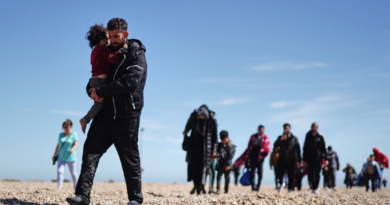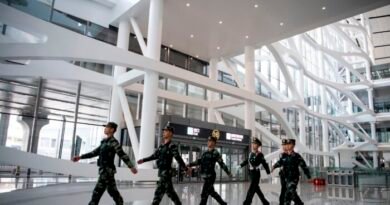US Establishes Task Force to Assist Philippines in Maintaining Presence in South China Sea
A U.S. embassy official stated on Nov. 21 that the U.S. military is providing support to Philippine operations in the South China Sea through a special task force named after a disputed shoal where Philippine and Chinese forces have clashed.
Task Force-Ayungin is named after the Second Thomas Shoal, where these clashes have occurred.
“Task Force-Ayungin enhances U.S.-Philippine alliance coordination and interoperability by enabling U.S. forces to assist the Armed Forces of the Philippines in the South China Sea,” said U.S. Embassy in the Philippines spokesperson Kanishka Gangopadhyay.
“This initiative aligns with various forms of cooperation between U.S. and Philippine forces,” he added.
During his visit this week, U.S. Defense Secretary Lloyd Austin signed the agreement with his Philippine counterpart, Gilberto Teodoro, on Nov. 18.
This agreement enables the United States to share sensitive military information, crucial for operating advanced weapon systems, including missile systems.
“Americans are strongly dedicated to the defense of the Philippines,” he stated during a press conference following the signing of the new agreement with Teodoro.
It is anticipated that this alliance will continue under the incoming U.S. administration, as Filipino President Ferdinand Marcos Jr. revealed on Nov. 19 that both he and President-elect Donald Trump expressed their desire to strengthen the alliance during a phone conversation.
Second Thomas Shoal
Philippine national security adviser Eduardo Ano informed reporters on Nov. 21 that Philippine operations in the South China Sea, including missions to resupply troops at the Second Thomas Shoal, are entirely Philippine-run.
“They are providing us with support, such as ISR [Intelligence, Surveillance, Reconnaissance] and maritime domain awareness, but in terms of direct participation, it’s purely Philippine-led,” Ano told reporters regarding the U.S. task force’s involvement.
There have been frequent confrontations between Philippine and Chinese vessels this year, prompting the U.S. to consider escorting Philippine resupply missions at one point.
The Second Thomas Shoal has been a focal point of contention between Philippine and Chinese forces for decades. In 1999, the Philippines intentionally ran aground its vessel BRP Sierra Madre to maintain a presence at the reefs.
While the Chinese regime claims a vast portion of the South China Sea as its territory, international law designates certain waters as international waters, allowing for free passage, and also delineates waters within 200 nautical miles of a nation’s coast as its exclusive economic zone.
After the Philippines pursued legal action in the dispute, the Arbitral Tribunal in The Hague ruled in 2016 that the Chinese regime’s claims were invalid in legal terms. However, the Chinese regime has refused to accept this ruling.
Following the establishment of the BRP Sierra Madre outpost by the Philippines, regular resupply missions were required for the less than a dozen personnel stationed there.
Throughout this year, Chinese vessels have repeatedly attempted to obstruct or harass Philippine vessels during resupply missions, sometimes resulting in physical altercations.

In this handout photo provided by the armed forces of the Philippines, Chinese coast guard members hold knives and machetes as they approach Filipino troops on a resupply mission in the Second Thomas Shoal in the South China Sea on June 17, 2024. Philippine armed forces via AP
Ryan Morgan and Reuters contributed to this report.





